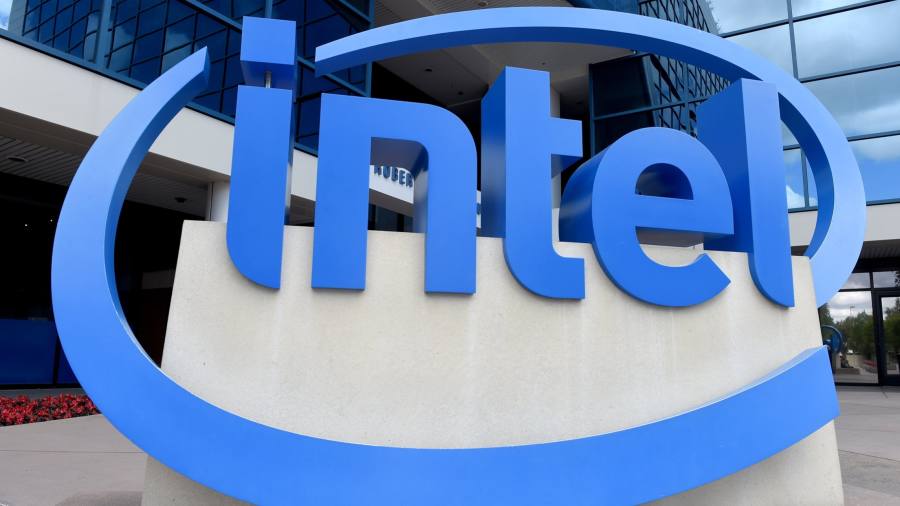Receive free Intel Corp updates
We’ll send you a myFT Daily Digest email rounding up the latest Intel Corp news every morning.
Intel’s partial rebound in the latest quarter from an inventory-driven drop in PC chip demand has given Wall Street a rare moment of financial outperformance to celebrate as the struggling US chipmaker seeks to stabilise its business and complete a four-year turnaround plan.
The company’s shares rose more than 7 per cent in after-market trading on Thursday after the earnings report, taking their total gain this year to 36 per cent. Intel’s sales of PC chips fell 12 per cent in the second quarter, to $6.8bn, but that was better than the 21 per cent decline analysts had been expecting and marked a big improvement from the 38 per cent collapse of the first quarter.
However, while the PC market is likely to return to “normal” trading conditions in the second half, an inventory overhang is set to weigh on the company’s data centre business for the rest of this year, said David Zinsner, chief financial officer. Intel continued to forecast a “modest recovery” for the second half, with the midpoint of its revenue guidance for the current quarter marginally above analysts’ expectations.
Intel has been losing market share to smaller rival AMD in data centre central processing units. The leap in demand for generative artificial intelligence has raised questions about whether data centre customers will switch some of their spending away from CPUs, the general-purpose processors made by Intel and AMD, to buy more graphics processing units, chips that speed up data-intensive AI calculation, where Nvidia is the market leader.
“We will see a little bit of a wallet shift between CPUs and GPUs, that certainly will happen in the back half of the year,” Zinsner said in an interview with the Financial Times. However, he said that the inventory correction would be a bigger factor in the data centre business in the second half.
Meanwhile, Intel’s profit margins recovered better than expected from a collapse in the first quarter, as higher sales lifted gross margins by more than two percentage points, to nearly 40 per cent, and cost-cutting enabled it to report an operating margin of 3.5 per cent, a 6 point improvement from the preceding quarter.
Intel also made headway in plugging the cash drain that led it to report negative free cash flow of more than $9bn in the first quarter. Lower capital spending and an improved inventory position reduced the outflow to less than $3bn in the latest quarter.
For the second quarter, Intel reported revenue of $12.9bn, a decline of 15 per cent from the year before, while earnings fell to 13 cents from 28 cents on a pro forma basis. Wall Street had been expecting revenue of $12.1bn and a loss of 4 cents a share.
Read the full article here



